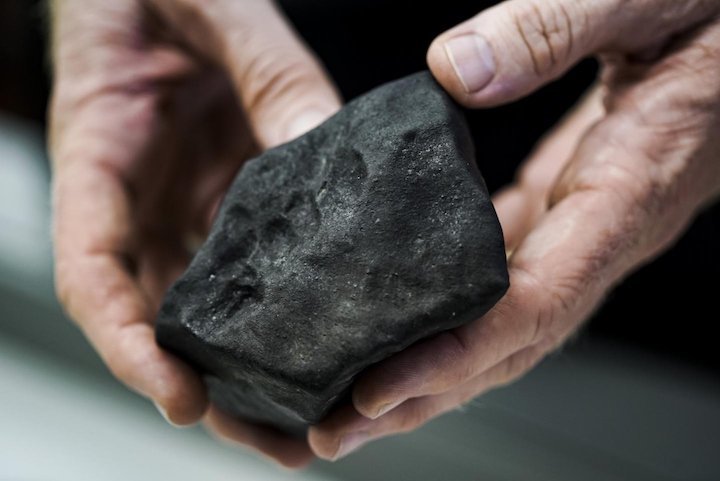1.12.2018

Close-up of a Benenitra meteorite
Four months ago, people in a small Madagascar town caught sight of a fireball shooting across the early-evening sky. Its boom was so loud, the ground shook.
A search for pieces of this celestial visitor soon followed. Researchers stitched together eyewitness accounts to help them understand what came down from the heavens on July 27.
What people saw crashing down, according to this detective work, was an ancient, 4.5 billion-year-old meteor from the early solar system.

Credit: Wits University
This space rock is now called Benenitra, named after the small town in southwestern Madagascar where it landed. Fortunately, Benenitra rock fragments appear to have missed any people or buildings, according to a Nov. 26 statement about the findings.
"The Benenitra meteorite is a new space rock, but it is also a witnessed fall, which makes it part of [a] special group of meteorites," Roger Gibson, a researcher at Wits University in South Africa, said in the statement. "It is part of our collective heritage as a species, planet and Solar System. It fell in a remote area that will henceforth be recognised internationally for the event on the evening of 27 July."
Researchers from the University of Antananarivo in Madagascar and international colleagues began investigating when they first heard about the fall. After news reached Wits graduate student Tim Marais, he collected preliminary eyewitness accounts to confirm the meteor crash. Marais happened to be traveling in the area days after it occurred.
Marais also retrieved rock fragments thought to have separated from the meteorite.
A thin section of one fragment went through microscopic analysis, enabling Gibson and Lewis Ashwal at Wits University to confirm its space origin. Other supporting evidence for the meteorite's provenance came from work done by Matthias Laubenstein at the National Institute for Nuclear Physics in Italy, who found evidence of recent cosmic ray exposure — meaning the fragment was outside Earth's protective atmosphere as recently as a few months ago.
The Benenitra meteorite comes from the early solar system, according to Wits University officials. Known as a chondrite, this common meteorite contains millimeter-size grains of silicate material preserved from the cloud of dust and gas that surrounded the sun billions of years ago, when the solar system formed.
So the fragments belonged to an ancient meteor. But how does one corroborate testimonies describing the crashing sound?
To find supporting evidence of a significant explosion in the atmosphere above Madagascar on July 27, Andry Ramanantsoa of the Laboratory of Seismology and Infrasound at the University of Antananarivo used infrasound data from seismometers to confirm an "upper atmosphere energy release event" over the town of Benenitra at 7:16 p.m. local time (1716 GMT). The explosion, according to officials, was large enough to cause vibrations in the ground.
Quelle: SC
